Takshashila Chronicles
Then starting from the Indus, he [Alexander] arrived at Taxila, a large and prosperous city, in fact the largest of those situated between the rivers Indus and Hydaspes.
Arrian, Anabasis Alexandri
The word Taxila is the Greek approximation of the city’s original name Takshashila. According to the Ramayana, Bharata, who was the younger half brother of Rama, founded Takshashila and the nearby city of Pushkalavati (modern Charsadda), naming them after his sons Taksha and Pushkala respectively.
Therefore, Takshashila can be interpreted to mean ‘Rock of Taksha’ (shila being the Sanskrit term for ‘rock’ or ‘stone’). Alternatively, Taksha is sometimes translated from Sanskrit as ‘cut’ or ‘carve’, lending the name Takshashila a meaning akin to ‘City of carved rock’.
Quick History
The city’s first major settlement is founded in 1000 BCE and it soon becomes the capital of the Gandhara Kingdom. It is conquered by Darius The Great in 6th century BCE, bringing it under the rule of the Achaemenid Empire. In 326 BCE, Alexander The Great takes it without a battle.
A few years after, Chandragupta Maurya defeats Seleucus Nicator, a former general of Alexander’s and now the ruler of the Seleucid Empire, annexing Taxila along with a large part of his territory west of the Indus.
Following the Mauryans, the city is ruled by the Indo-Greeks of Bactria, Indo-Scythians, and then the Indo-Parthians for a few centuries.
In the 1st century CE, the city comes under Kushan rule, who govern it from the capital of Purushapura (Peshawar). After that, it briefly sees Gupta rule until its devastation by the Huna invasions of India in the 5th century CE.
Xuanzang, a Chinese Buddhist monk, visits Taxila in 631 CE and describes it as desolate and ruined. Taxila ceases to appear in subsequent historical records.
Fast forward to the 19th century, the ancient city of Takshashila mentioned in Indian and Greek historical records is completely lost to us. Historians only have a very vague idea of its possible location, thanks to the travel itineraries of Chinese pilgrims like Faxian and Xuanzang.
This all changes in 1863 when Alexander Cunningham, founder of the Archaeological Survey of India, correctly identifies the location of Takshashila at what locals call “Shah-Dheriyan” (Mounds of kings). In 1913, John Marshall begins the excavations of ruins, which last for 21 years.
Significance as a Center of Education
Ancient Taxila was a center of higher learning and home to one of the earliest educational institutions in history that could be compared to a university.
This institution, historical records of which date back to at least the 5th century BCE, attracted scholars like Panini, the great Sanskrit grammarian, and Chanakya, the renowned Indian polymath and author of Arthashastra. Jivaka, the personal physician of the Buddha and the King Bimbisara, also spent seven years in Taxila training in medicine.
Another notable alumnus of Taxila’s ancient university was Chandragupta Maurya, founder of the Mauryan Empire. He spent eight years as a resident student at Taxila, receiving education in “all the sciences and arts” of the period, including military sciences. According to Plutarch, Alexander the Great met a young Chandragupta while campaigning in Taxila.
Archeological Sites
Taxila’s archeological sites contain several stupas (sacred burial mounds) and Buddhist monasteries. One of the most interesting is Dharmarajika Stupa, located just a few minutes east of the Taxila Museum.

The story goes that after Buddha’s death, his relics and cremated remains were distributed among the royal families of eight different kingdoms who each erected a grand stupa to house their share of the sacred relics.
However, in the 3rd century BCE, Emperor Ashoka had these relics dug out and re-entombed under stupas that he ordered to be built all over India. Dharmarajika is one of those stupas and it is very much possible that a portion of Buddha’s remains is buried under it. Now there’s an exciting thought.
Two other interesting sites are the twin Buddhist monasteries of Mohra Moradu and Jaulian, located relatively close to each other. Both were built in the 2nd century CE during the Kushan Period and were active until the 5th century CE.
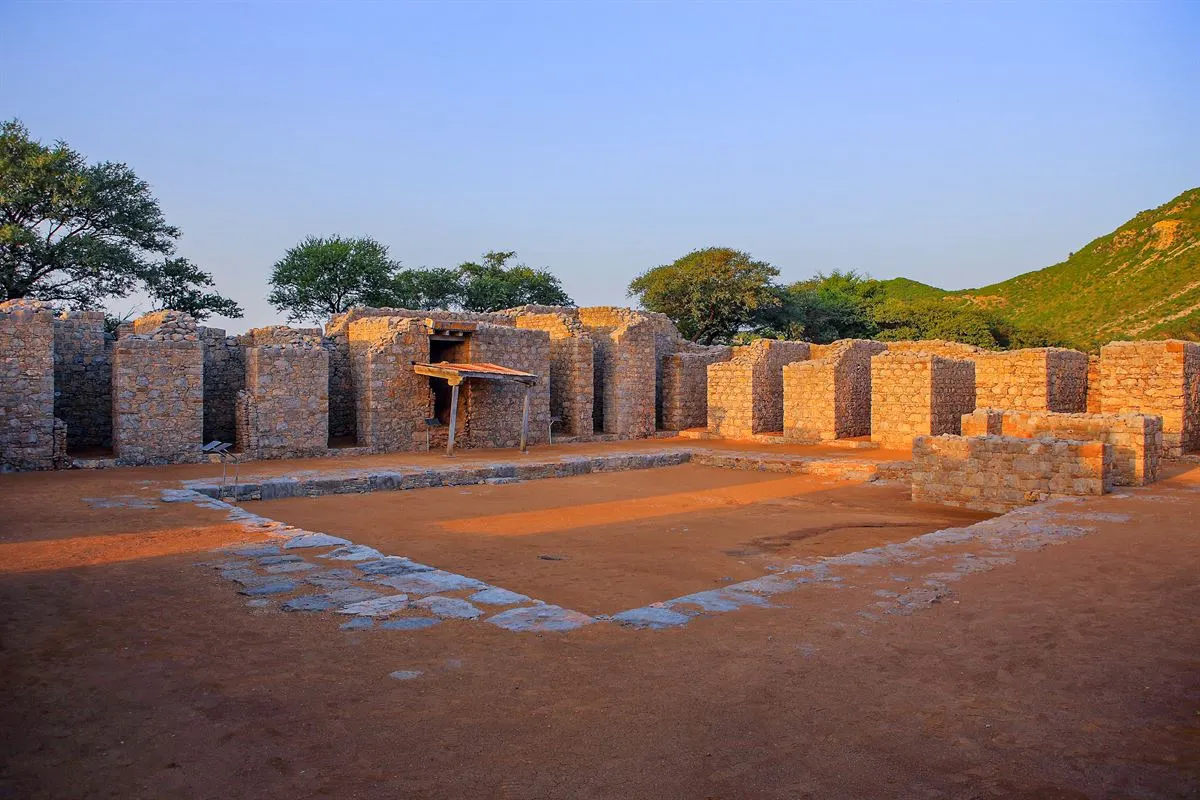
Central courtyard of the Jaulian Monastery. The pool in the middle was used for collecting rainwater and lotuses were grown inside it. The cells surrounding the pool served as residences for monks. The monastery was a two-storeyed building, and the stairs leading to the upper floor are still preserved.
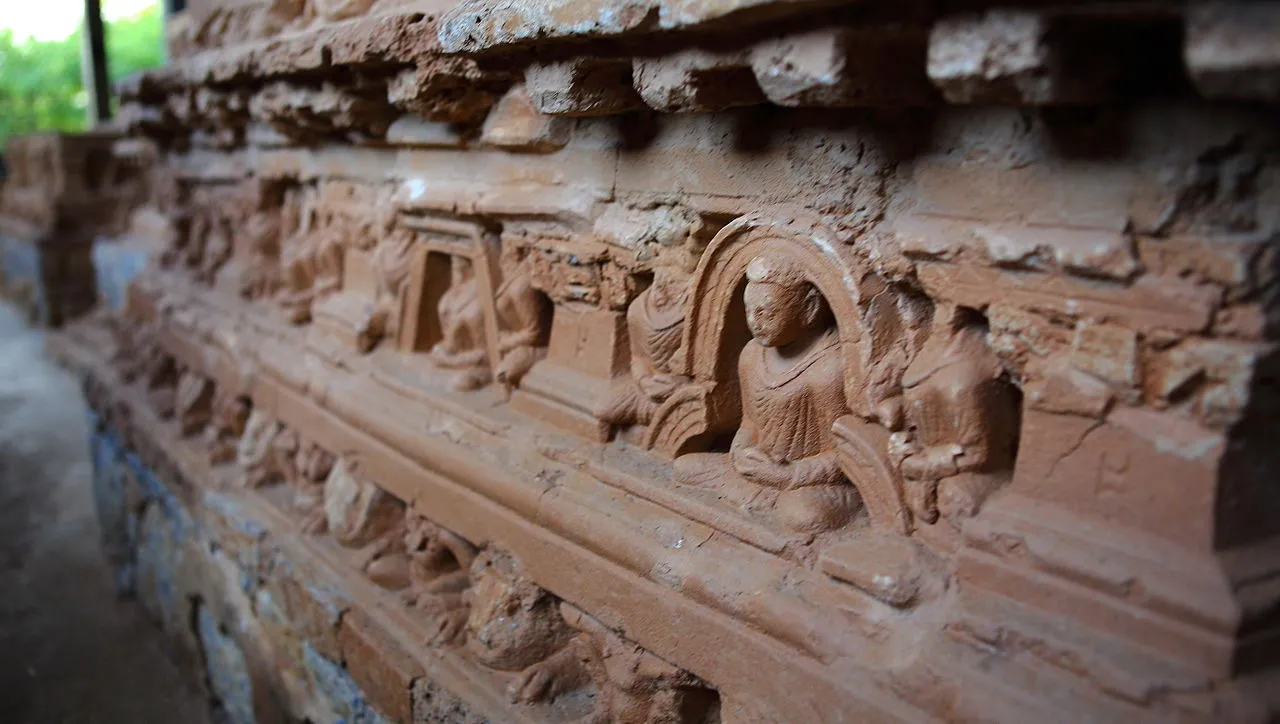
Closeup of a votive stupa at Jaulian Monastery, featuring the Buddha in the lotus position. Atlantes figures at the base indicate Greek influence.
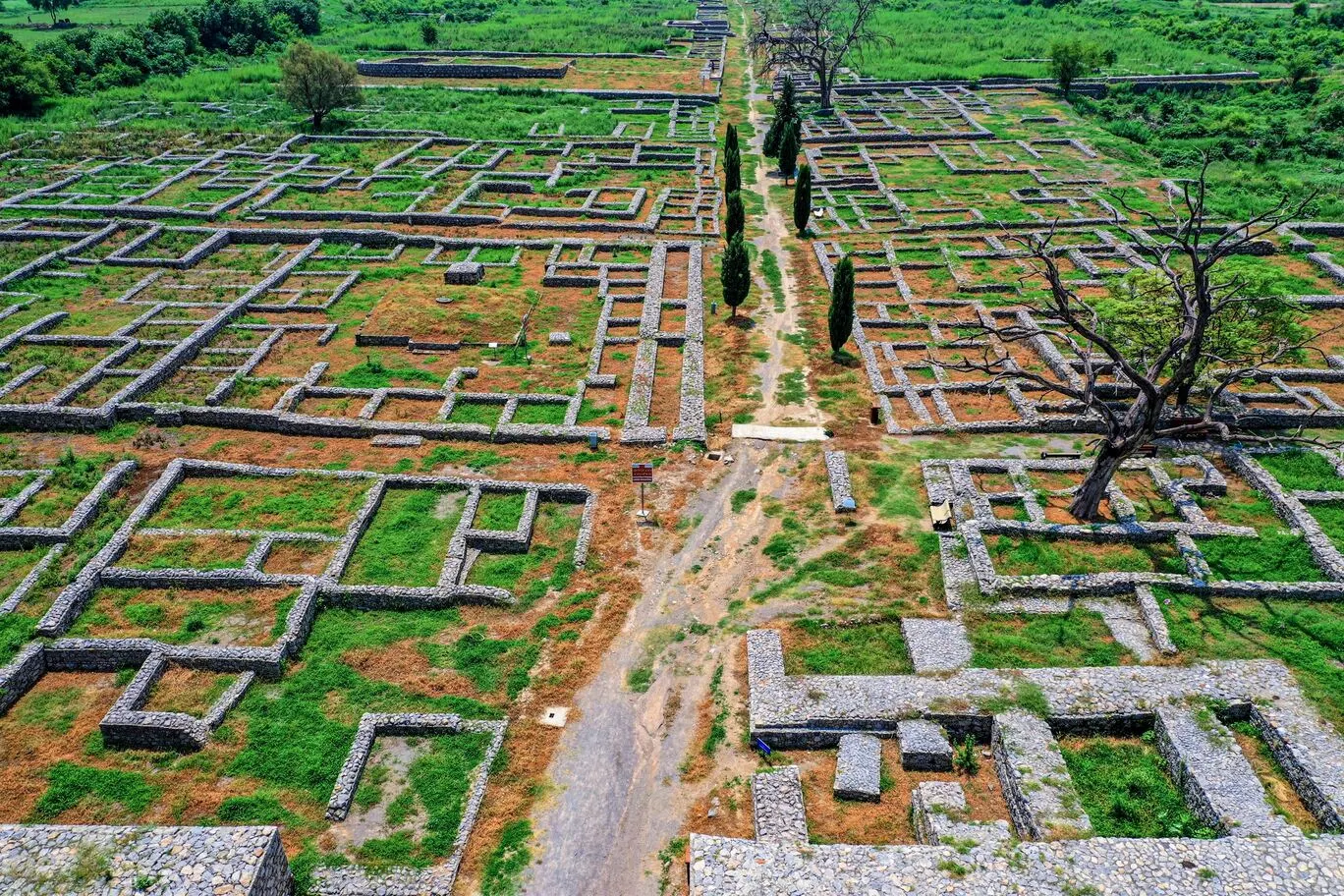
Remains of Sirkap, a city founded by the King Demetrius I of Bactria in around 180 BCE. Situated about 2 kilometers north-east of the Taxila Museum.
The word Sirkap, meaning ‘cut-off head’, similar to the nearby hill range Margala, meaning ‘cut-off throat’, hints at the region’s association with an ancient Buddhist legend. In the legend, Buddha, in one of his previous births, cuts off his head to feed a hungry lion.
This theme of extraordinary self-sacrifice is central to Jataka (stories from the past lives of the Buddha) and can be found in tales as far as Balochistan, sometimes also linked to other local saint figures.
For example, in a legend associated with the ruins of Andan Dheri near Chakdara, Buddha assumes the form of a great serpent lying dead in the valley to save the people from famine. The starved people cut pieces from its body and feed themselves.
One of the Sirkap artifacts that caught my eye was this terracotta “Ritual Tank” since I had seen it before in one of Salman Rashid’s videos, though not in such good shape. Similar votive tanks have been discovered at several other sites across the Indian subcontinent, including locations like Chirand and Kolhapur.
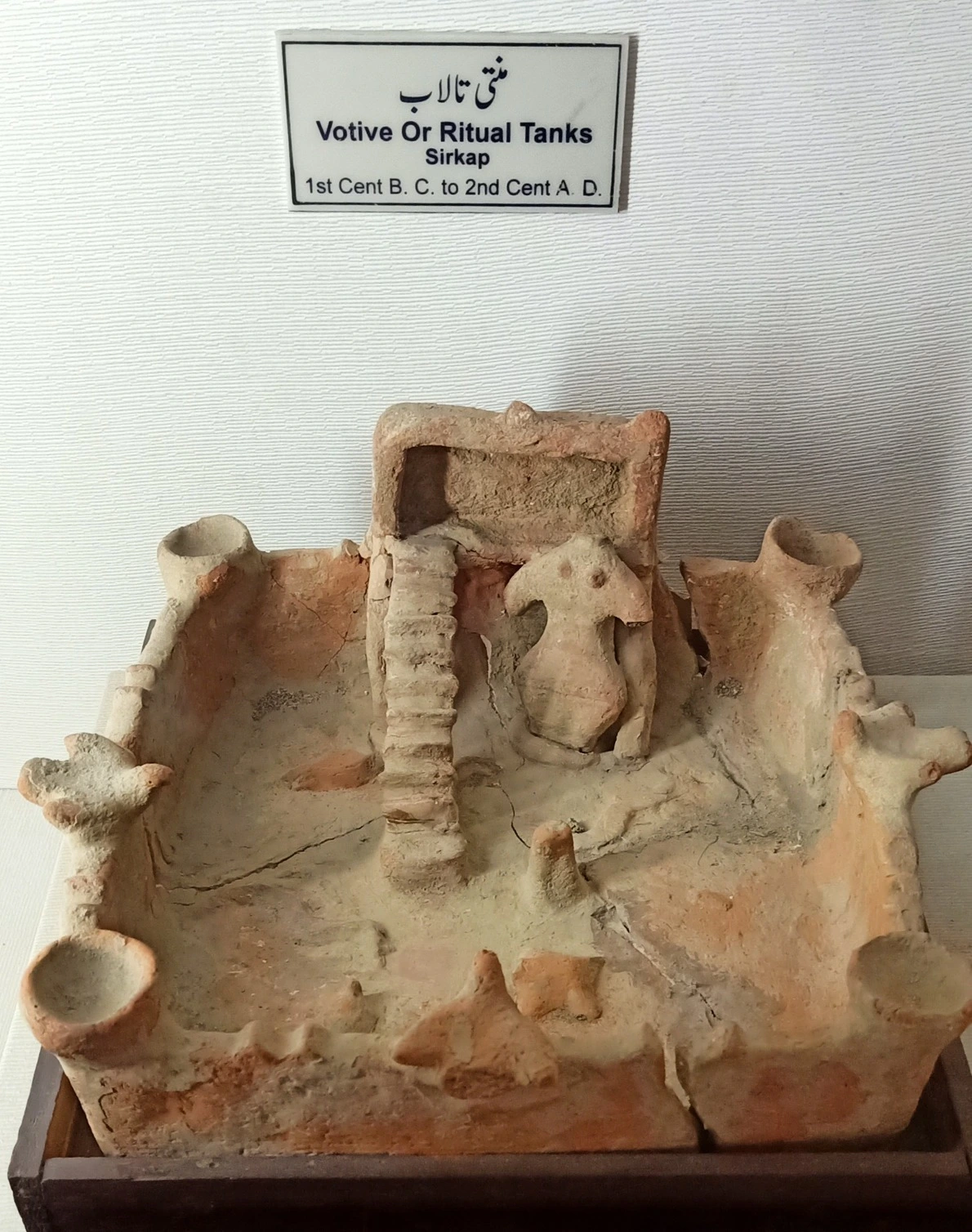
The tank is possibly Jain in nature and seems to symbolize the four natural elements and all creation arising from them. The earth is symbolized by the clay from which the tank is made - air, by the birds perched on the container’s rims - fire, by the lamps on each of the four corners, and the water which partially filled the tank symbolized, well, water.
You might be able to make out depictions of various land and aquatic animals on the floor of the tank, such as a snake and turtle. A female figurine can be seen beside the stairs, likely a depiction of a mother goddess.
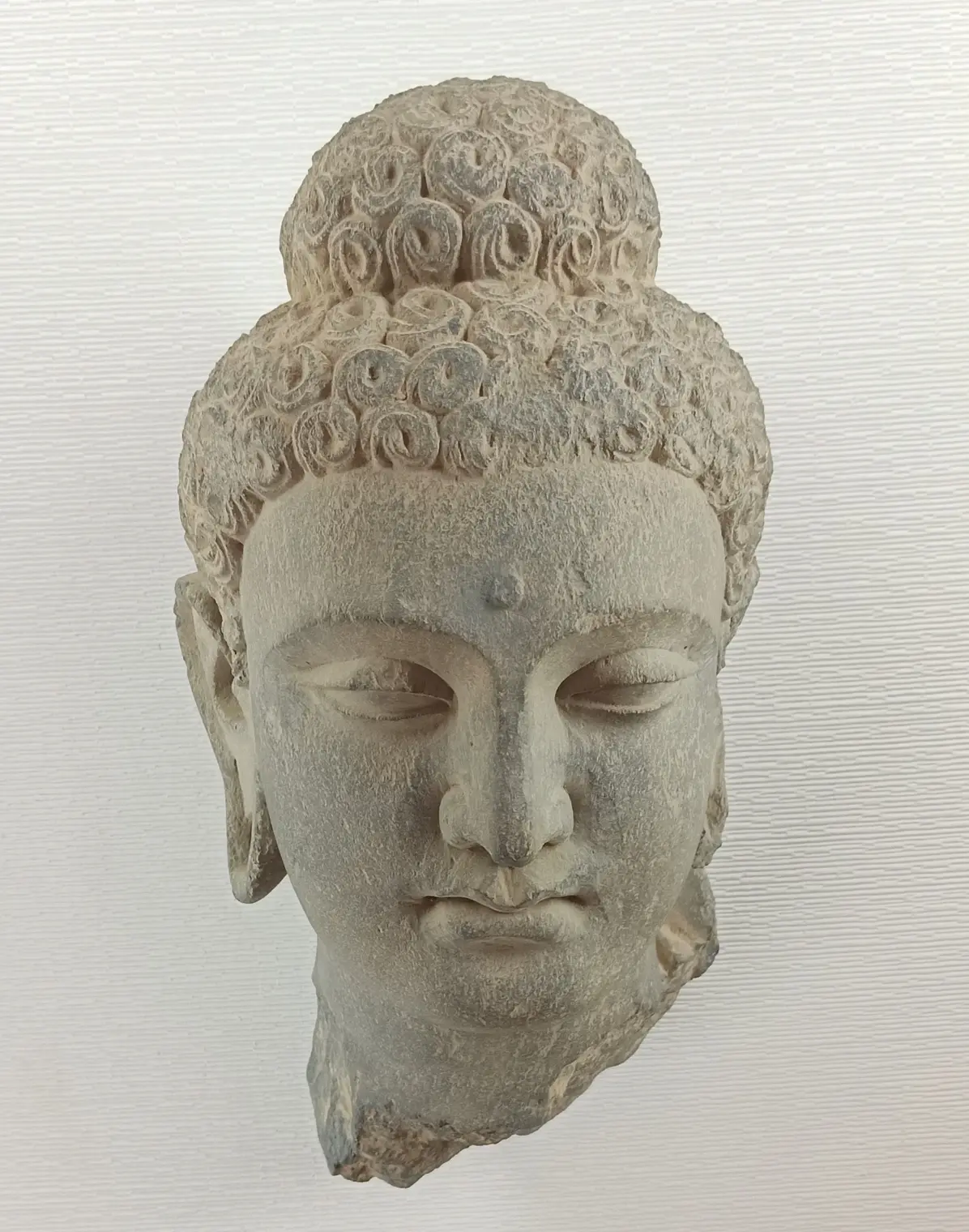
A Buddha’s bust on display in Taxila Museum, likely from Kushan Period.